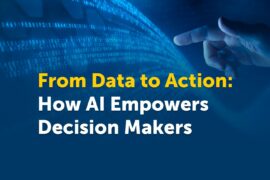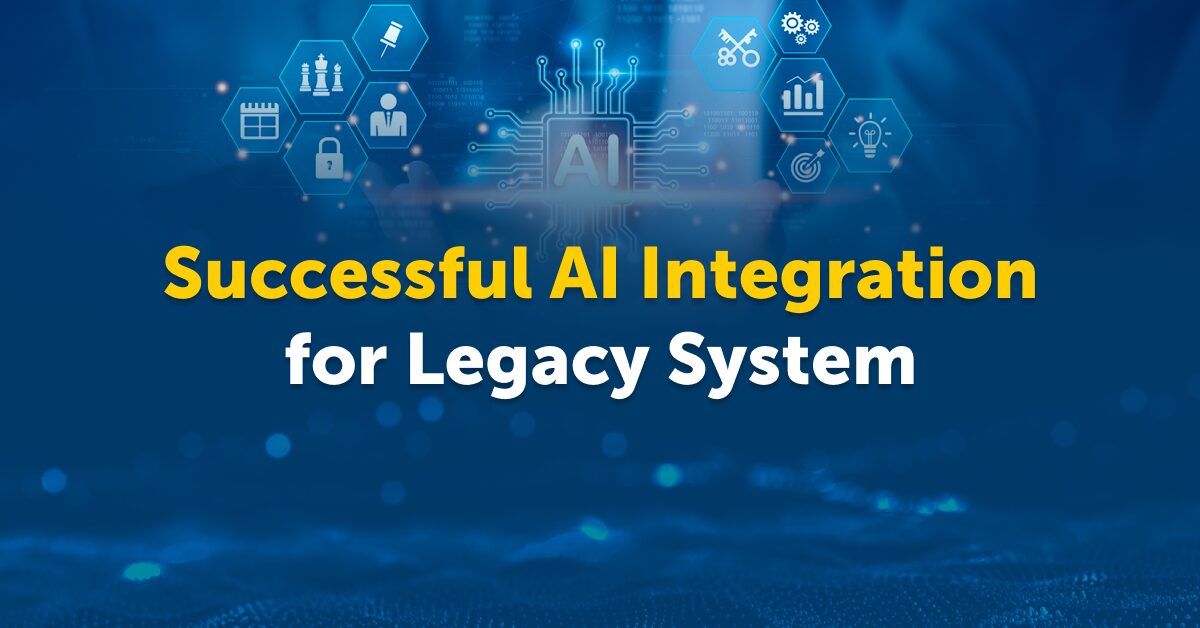From Data to Action: How AI Empowers Decision Makers

Executives are grappling with extracting meaningful insights from their data. This challenge is where Artificial Intelligence (AI) comes in, reshaping how executives leverage data for strategic decision-making.
The Data Dilemma: Turning Information into Intelligence
Executives face the task of extracting meaningful patterns from vast datasets manually. AI addresses this challenge by swiftly processing large volumes of data. In the financial sector, AI algorithms analyze market trends, historical data, and real-time financial indicators to offer insights that guide investment decisions with precision.
Strategic Decision-Making
AI doesn’t only analyze data; it also excels at predictive analytics. For retail executives, AI can forecast consumer trends based on purchasing behaviors, enabling inventory optimization and personalized marketing strategies. This predictive capability empowers executives across sectors to make informed decisions that anticipate future markets.
Personalized Insights for Every Executive
AI’s ability to tailor insights to individual roles is a key feature. For healthcare executives, AI-driven systems can provide personalized patient outcomes based on treatment plans and historical health data. This personalized approach ensures executives receive information that is not only relevant but also aligns with their unique decision-making requirements.
Efficiency Redefined: Time and Resource Optimization
Automation is a major part of AI’s contribution to efficiency. In manufacturing, AI-driven robotic process automation optimizes production, reduces errors, and enhances operational efficiency. Executives benefit from streamlined workflows, allowing them to focus on high-level strategizing rather than mundane tasks.
Click here to schedule a complimentary consultation with an AI expert from our team. To learn more about AI solutions to transform your business click here.
A 4-Step Guide for Executive AI Adoption
Step 1: Define Clear Objectives
Begin by identifying business challenges or opportunities where AI can have an impact. Whether it’s enhancing customer experiences, optimizing operational processes, or predicting market trends, clear objectives provide the foundation for a successful AI adoption strategy.
Step 2: Assess Data Readiness and Availability
Evaluate the quality, quantity, and accessibility of your existing data. AI’s effectiveness relies on robust datasets. Ensure your organization’s data infrastructure supports AI applications and that data is accessible for analysis.
Step 3: Start with Pilot Projects
Embark on the AI adoption journey with small-scale pilot projects. Choose areas where AI can deliver tangible and quick results. This approach allows executives to assess the technology’s feasibility, understand its impact, and gain valuable insights without committing to large-scale implementation.
Step 4: Foster Continuous Learning
AI evolves rapidly. Encourage a culture of continuous learning within your organization. Provide training opportunities for executives and employees to understand AI better. This ensures that your team stays up to date on the latest advancements and maximizes the benefits of AI.
Bottom Line
In embracing a data-driven leadership paradigm, executives leveraging AI will spearhead a future where each decision is a well-informed strategic move. The fusion of executive acumen with AI capabilities promises to redefine leadership in the ever-evolving landscape of global business.
Click here to schedule a complimentary consultation with an AI expert from our team. To learn more about AI solutions to transform your business click here.


